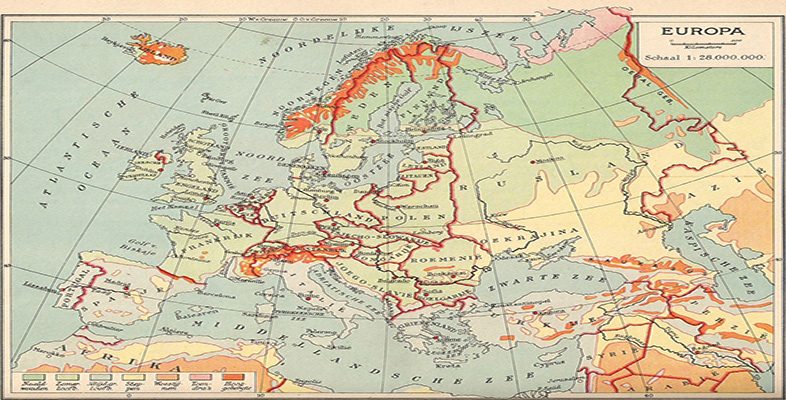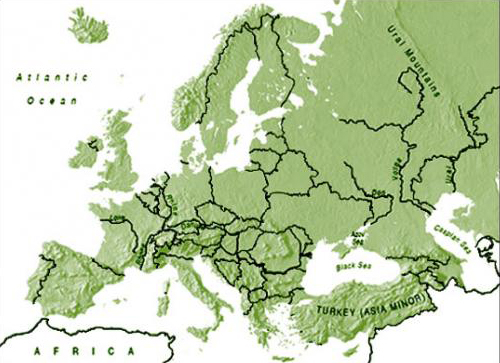2.1 Europe as a geographical area
From a British point of view, judging from frequently heard expressions, Europe is something ‘out there’ (or perhaps, in the sense of EU- or Brussels-inspired regulation, ‘up there’). ‘Britain’ and ‘Europe’ are generally understood to be distinct entities rather than overlapping categories. When they ‘go to Europe’ most British people leave Britain behind – at least in the physical sense. In conventional geographical terms the situation is rather different. Europe is generally understood to be the western portion of the Eurasian landmass, together with a number of islands not far from the mainland (Corsica, Crete, Malta, Sardinia, Sicily, Ireland and Iceland, as well as Great Britain) (see Figure 3). But that does not provide a clear-cut idea of where Asia stops and Europe begins.
Precisely where the division between Europe and Asia lies is still a matter of some debate. Europe was first spoken of in ancient Greece, and the Greeks generally thought of a water-bound Europe whose borders lay on the Black Sea and its northern extension, the Sea of Azov, as far as the banks of the River Don. Early modern conceptions pushed the European frontier further east in Russian territory. With the construction of the Volga-Don canal in the twentieth century, it became possible to think of Europe's easterly borders following a larger waterway and resting mostly on the Volga, a great river that embraces much of what is regarded as European Russia and which had considerable historical significance in delimiting an historic Muscovite heartland.
From the eighteenth century, though, Europe has often been understood to end (or begin) with the Ural Mountains and the river that takes its name from them and flows south into the Caspian Sea. This idea carries its own ambiguities. Following the dissolution of the Soviet Union in 1991 it leaves the Transcaucasus and newly independent states of Armenia, Azerbaidjan and Georgia in an uncertain relation with regard to Europe, while Turkey (currently identified – controversially – as a potential EU member) also lies to the west of the Urals. Turkey, or Asia Minor as it was known in ancient times, has long stood in an uncertain relationship with Europe and became a major antagonist of early Christian Europe with the Ottoman invasions of the fourteenth century. For centuries it dominated south-eastern Europe and remained a major force there until the Balkan Wars of 1912–1913. Alien or not, Turkey was certainly a major European presence for several centuries. Following the revolution of Kemal Attaturk in the 1920s, a modern Turkey emerged with a quite different outlook, and it can now be claimed that the country ‘is not only Western, it is wholly European’ (Moïsi, 1999, p.47). Turkey belongs to the Council of Europe and first applied for membership of the EU in 1987, an initiative that was not received with much enthusiasm, and Turkey has only recently begun to participate in formal accession procedures.
A geographical Europe is not difficult to define in broad terms, then, but consideration of the status of its bordering areas leads directly to further questions about the nature of European identity. A description of Europe, or any other territory, as being ‘just a geographical expression’ invariably implies a diminished status and the absence of more elevated claims associated with the embodiment of some general values. The development of modern Europe has certainly not been devoid of such broad cultural associations. Even those who, like Tony Judt (1996, p.141), are sceptical about the future of a unified Europe and strongly aware of its mythic properties would accept that Europe is more than simply a geographical notion.

